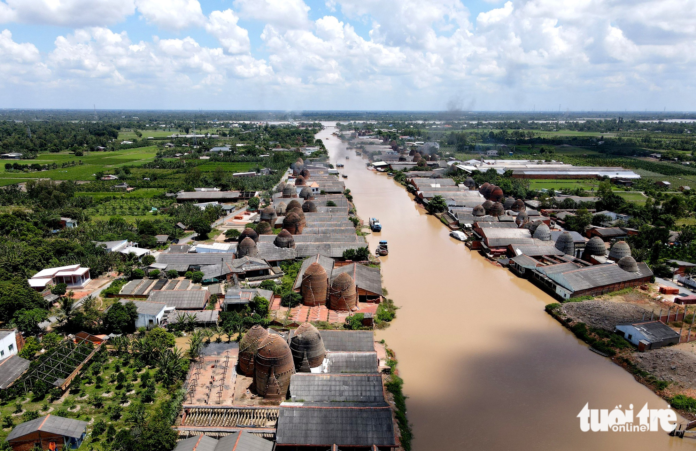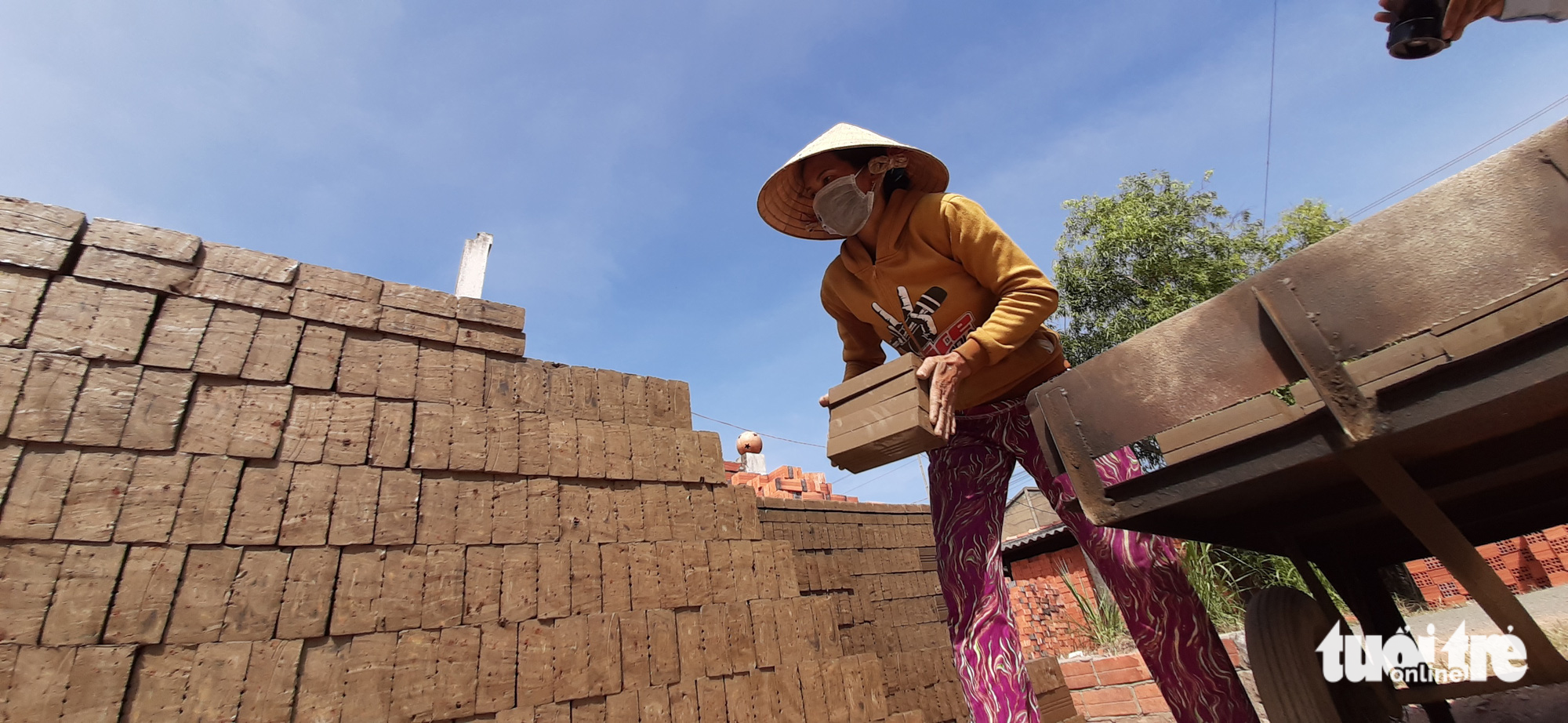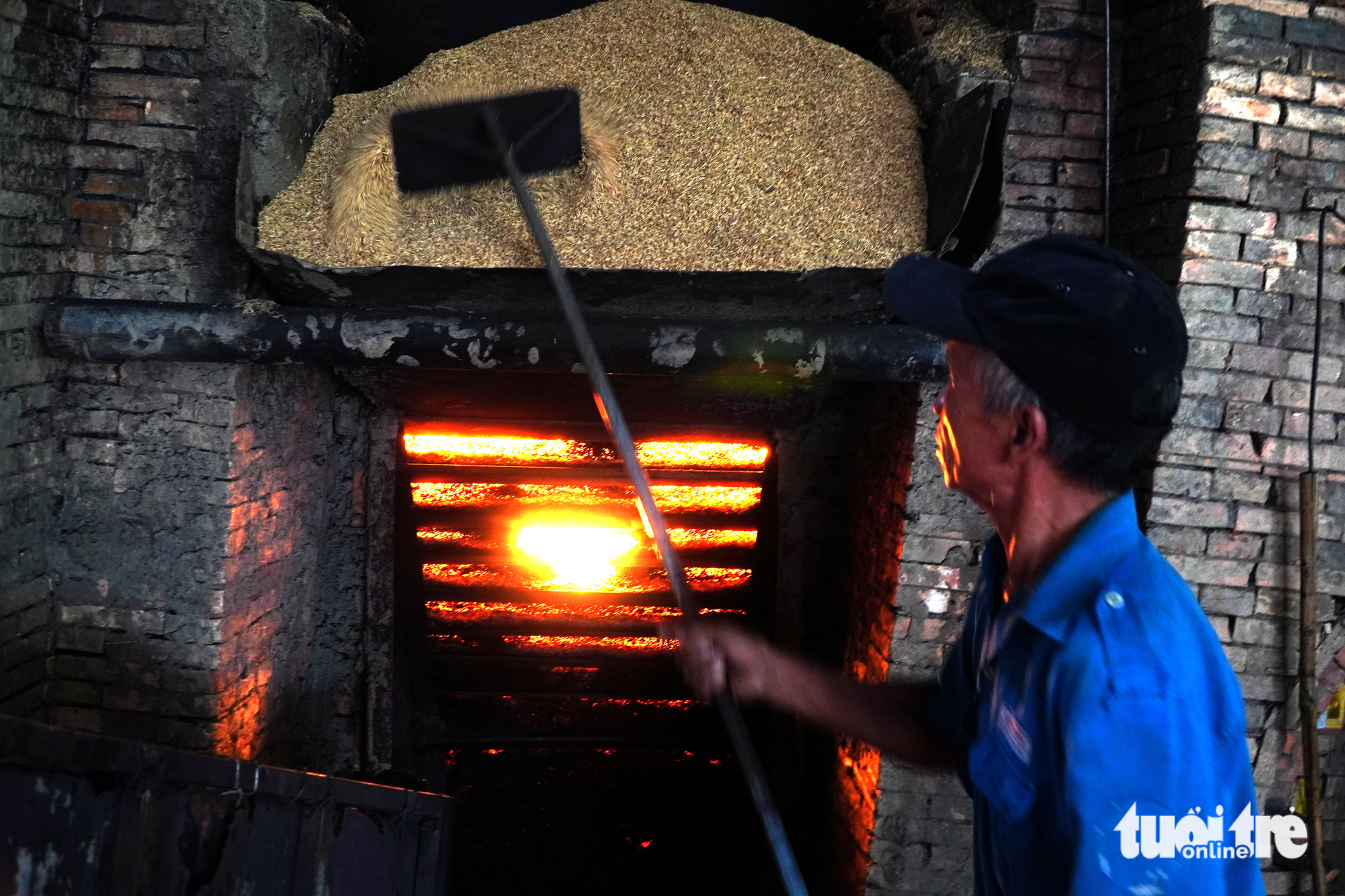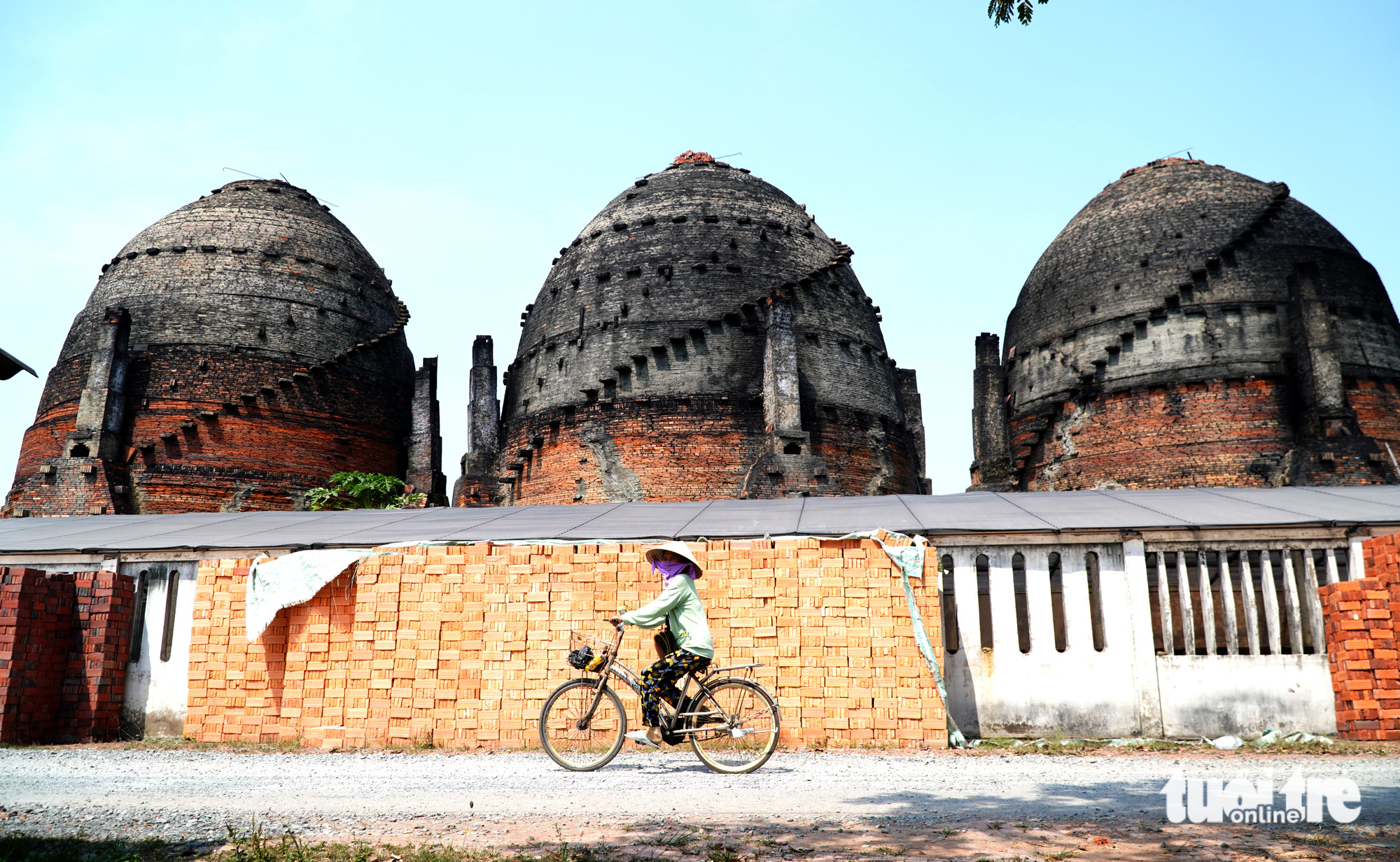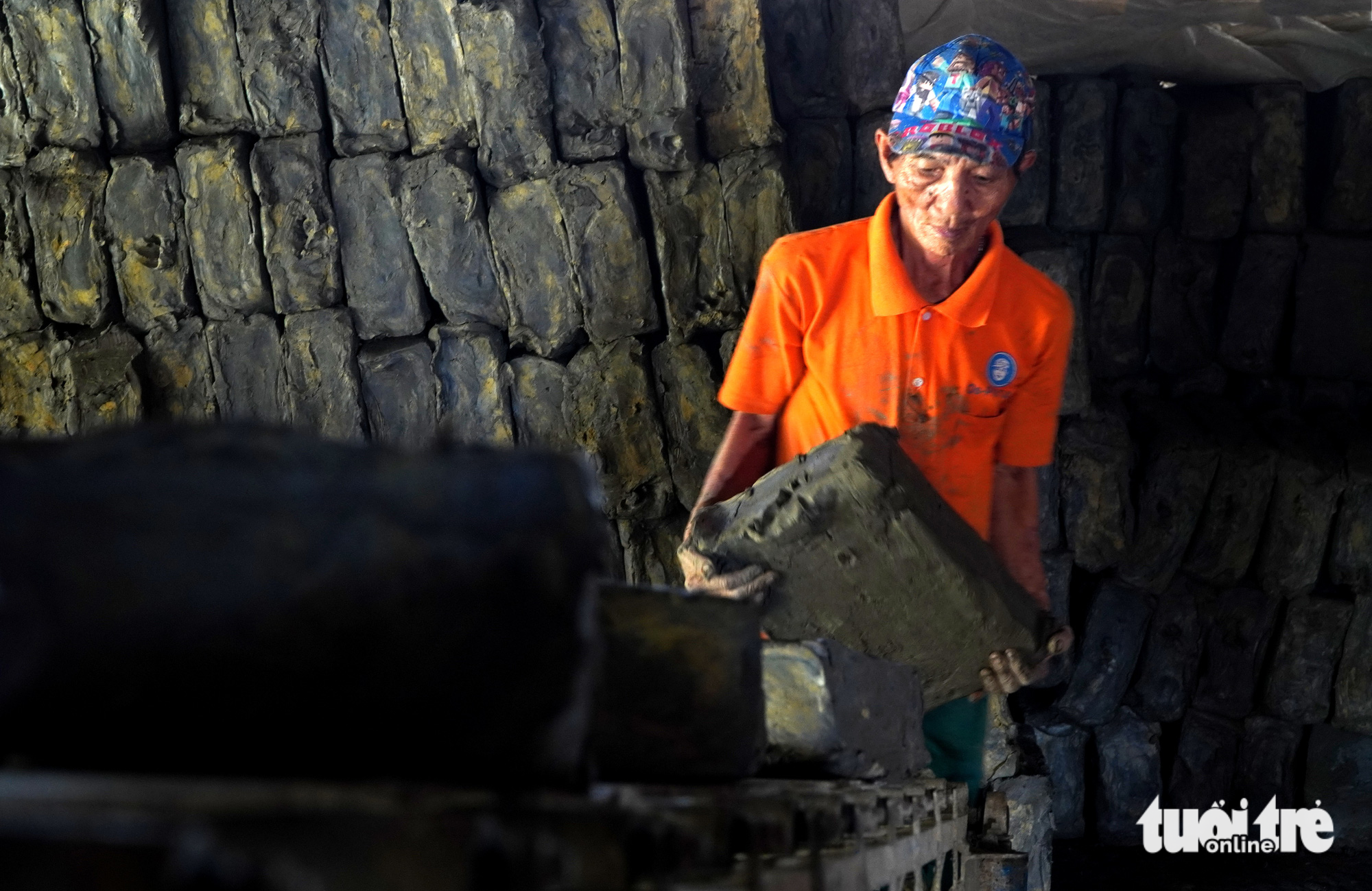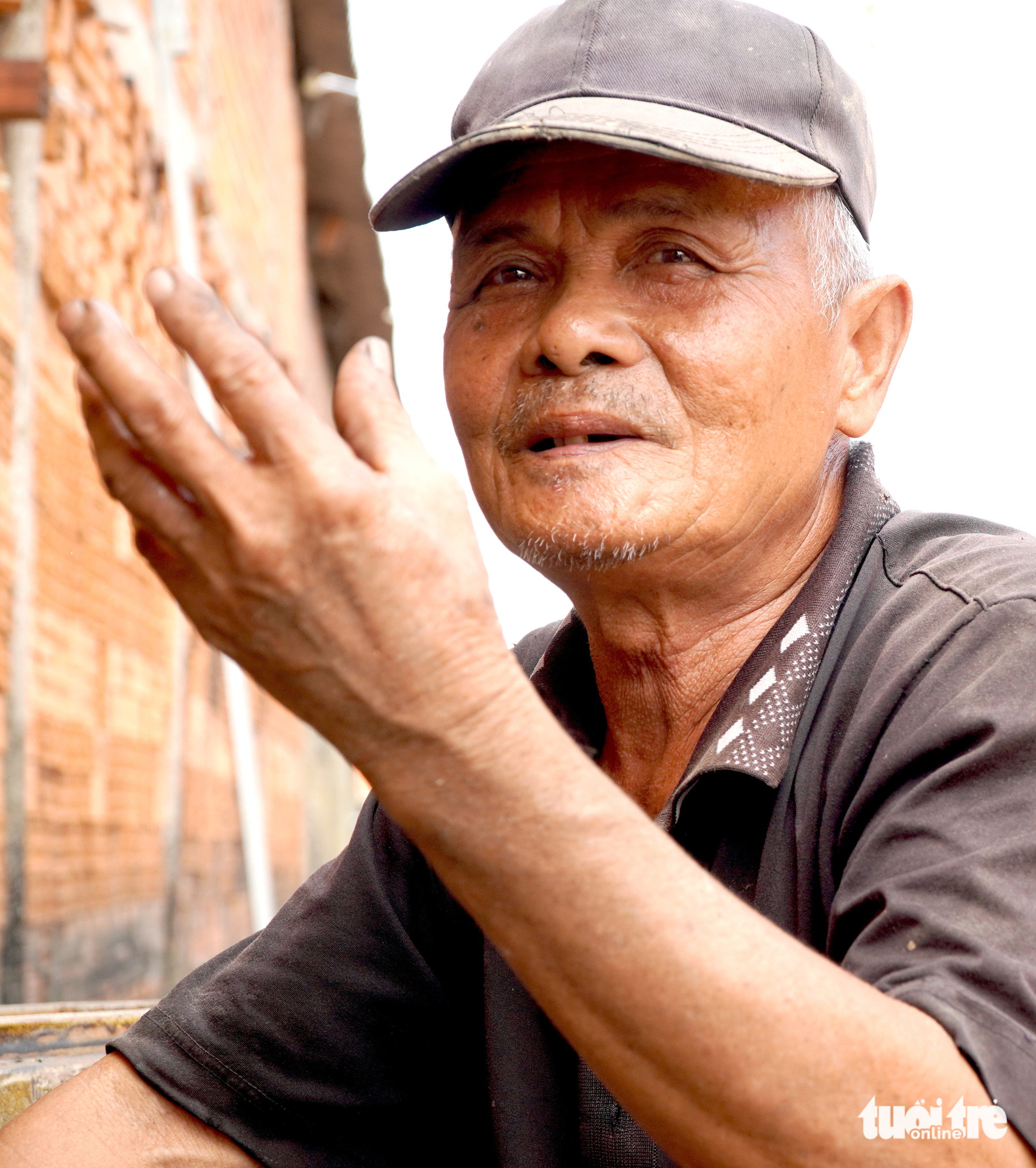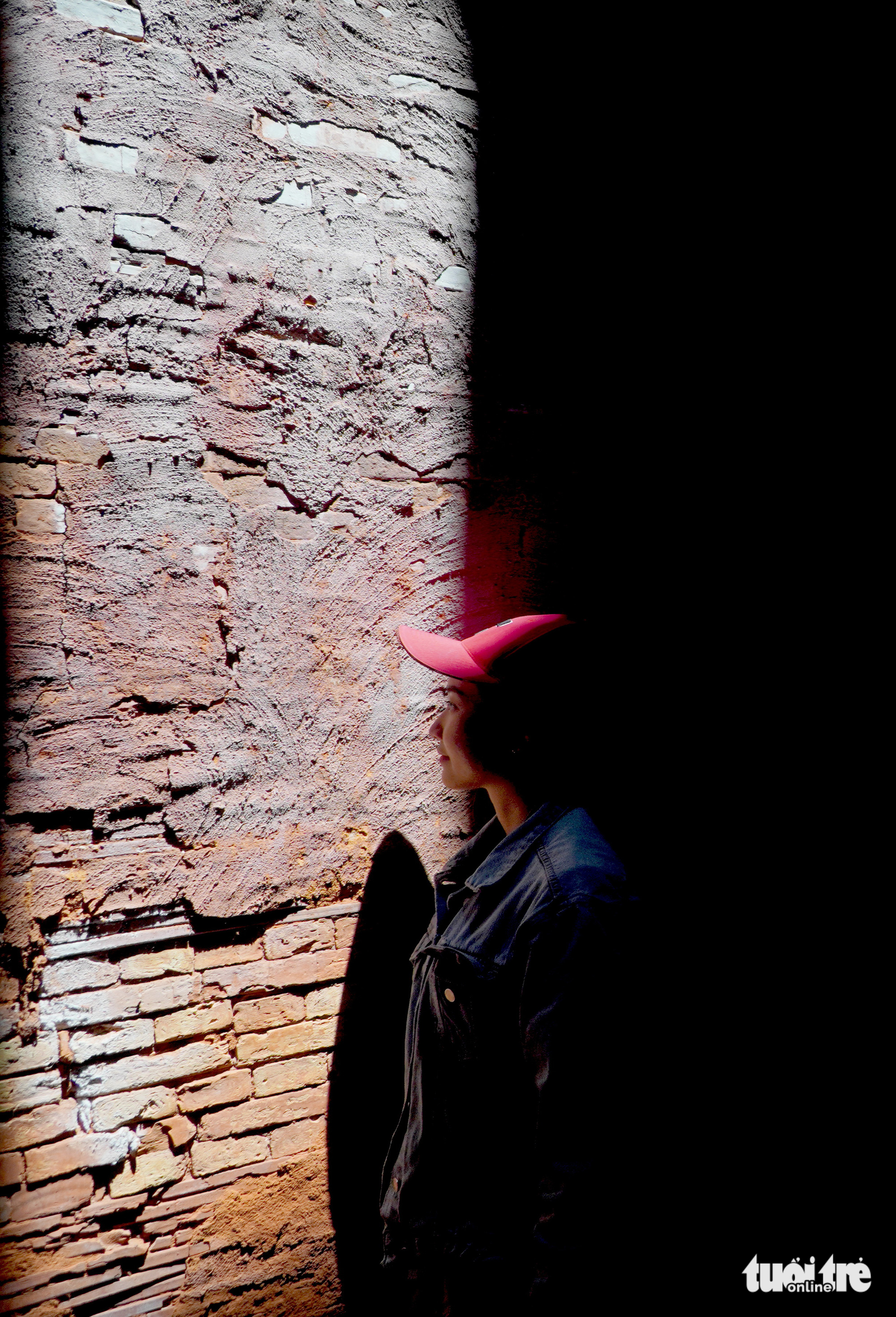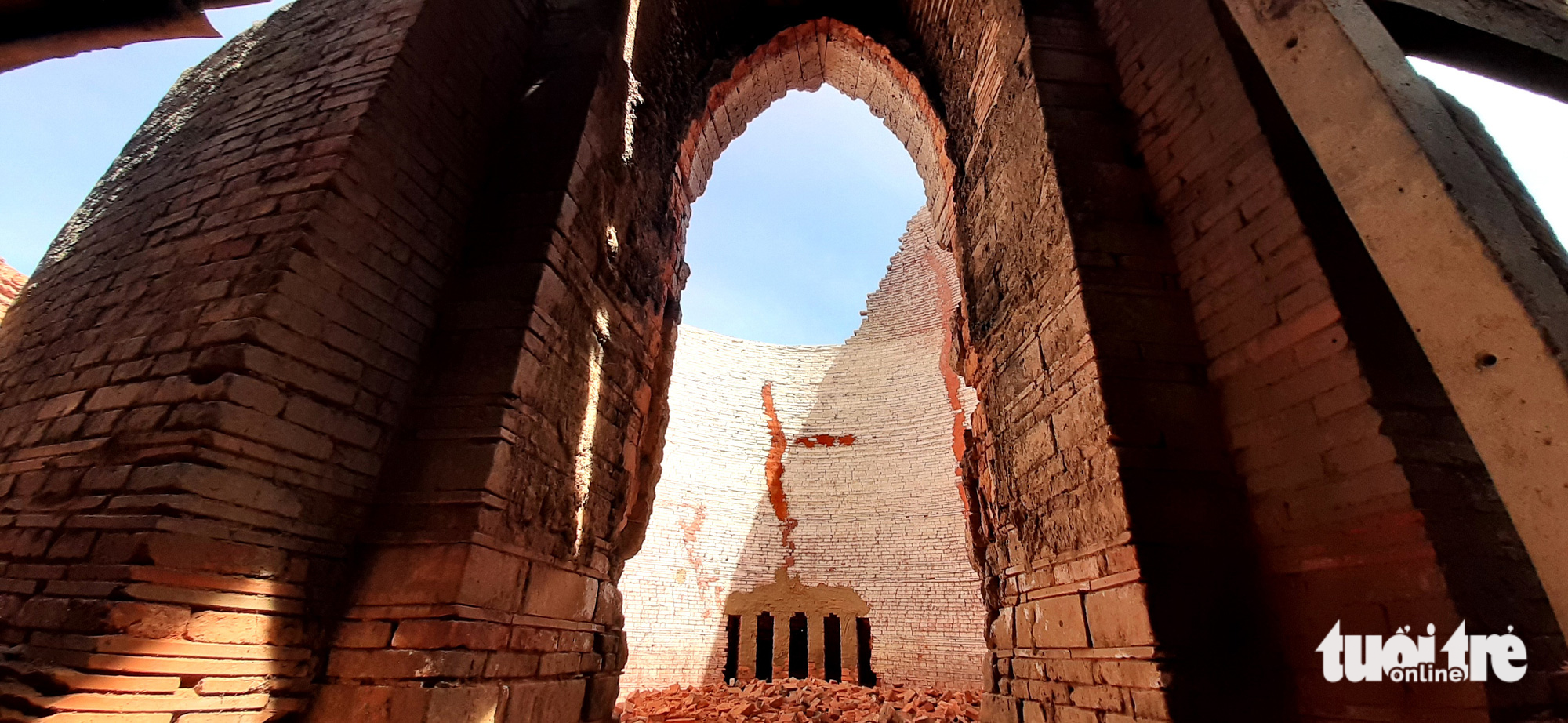Situated in Mang Thit District of Vinh Long Province in the Mekong Delta of Vietnam, the Mang Thit brick village, known as the ‘kingdom of bricks’ in the region, has a history of over 100 years, making it very attractive to tourists from near and far.
The uniqueness of the ancient brick village lies in its kilns, with each of them having a height of 5-12 meters and a round tower shape, creating a distinctive architectural complex.
Mang Thit is also regarded as a village of traditional craftsmanship and tourism.
Such a perfect combination drives up the village’s economic growth.
|
|
| Blocks molded in clay are sunbathed before being put into a kiln for burning in the Mang Thit brick village in Mang Thit District, Vinh Long Province, Vietnam. |
|
|
Vinh Long Province offers supportive policies to local craftsmen and gives special mechanisms to turn the brick hub into the ‘Mang Thit contemporary cultural heritage’ to further boost socio-economic development.
Nam Lon, whose real name is Le Van Lon, a 72-year-old resident of Nhon Phu Commune, Mang Thit District, has over 40 years of brick-making experience.
In boom times, the village had over 2,800 kilns, but it is now home to only 1,000 furnaces, with a mere 30 kilns burning frequently, he recounted.
Meanwhile, the rest lie idle waiting for tourists, he added.
“Apart from the beauty of kilns, which look like eggs, the secret to burning a kiln becomes unique and exciting,” Nam Lon said.
“As a highly-skilled kiln-man, he must know how to control the fire to burn bricks well.
“Brick-making can make money, depending on the artisan’s experience and skills.
“I am very pleased and excited to see the place used for tourism development.
“If a large number of tourists visit the village, locals can enjoy a more comfortable life and preserve the traditional craft.”
In fact, the Mang Thit brick village is fading into history as many artisans have quit the craft to land a new profitable job, while furnaces have degraded.
The owners of operational kilns are struggling to make a living and wait for a promising start of a ‘contemporary cultural heritage site.’
|
|
| The village now has only 30 burning furnaces as many artisans have landed another job. |
|
|
| Mr. Hoa, a resident of Nhon Phu Commune, has pursued the craft for over 20 years. |
|
|
| Nam Lon says that in boom times, the village has over 2,800 kilns, but it is now home to only 1,000 furnaces, with a mere 30 kilns burning frequently. |
|
|
| The Mang Thit brick village is a must-visit destination in the Mekong Delta region. |
|
|
| A photo shows abandoned and aging kilns. |
Like us on Facebook or follow us on Twitter to get the latest news about Vietnam!

